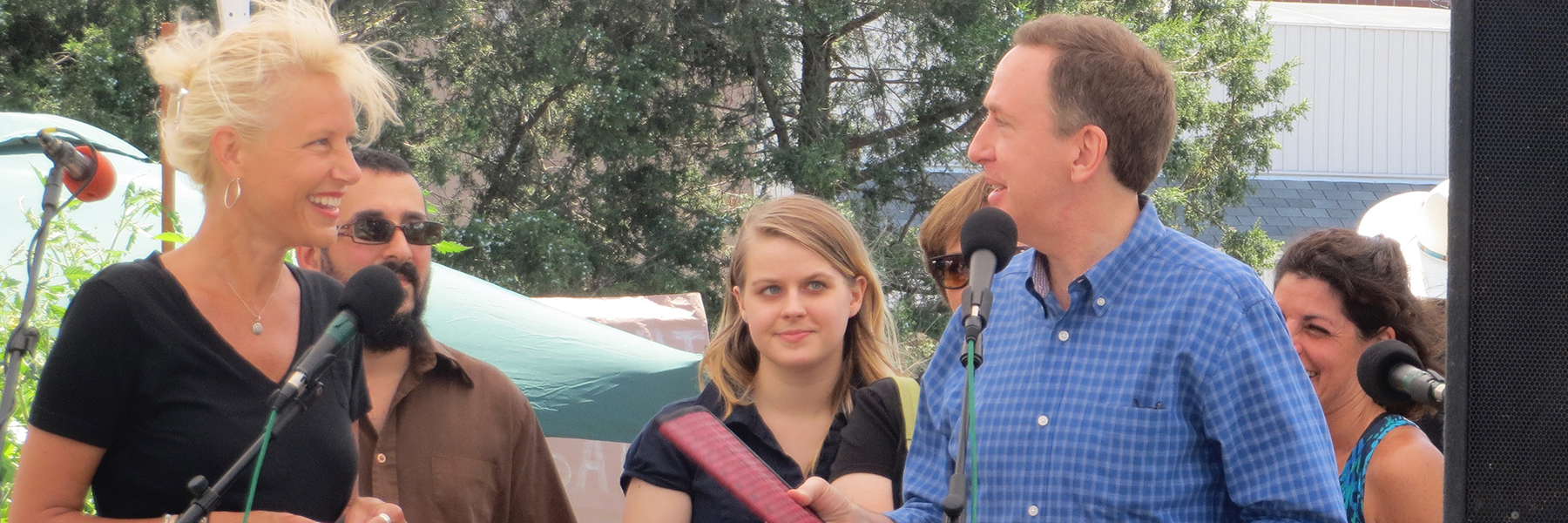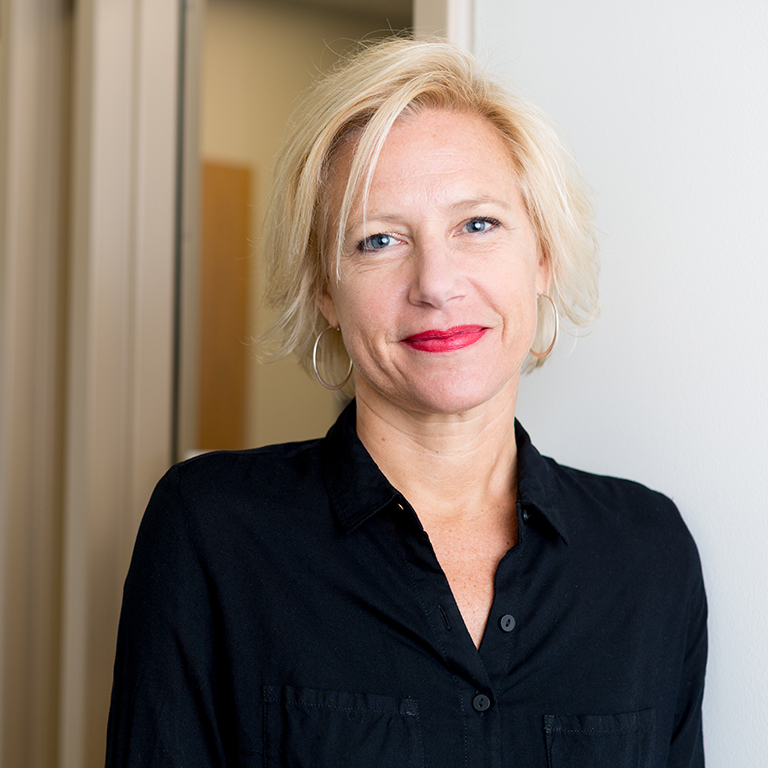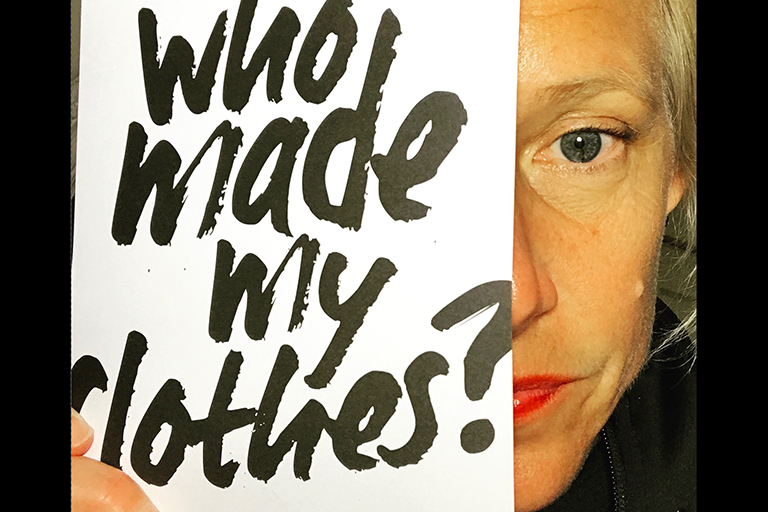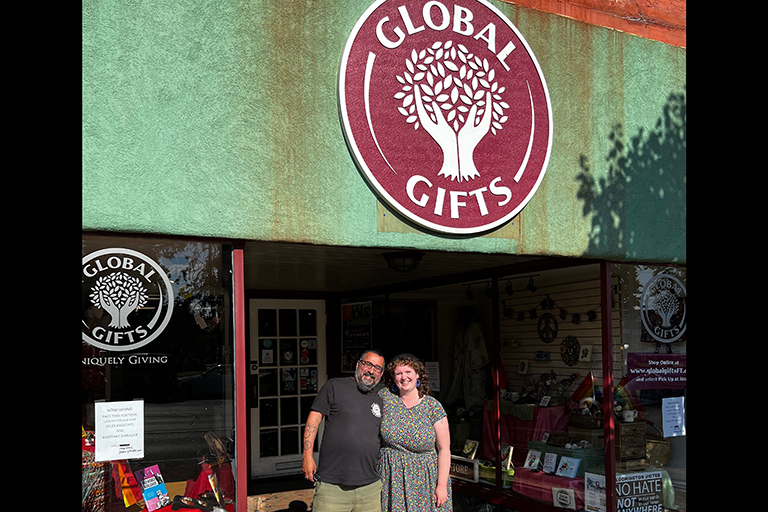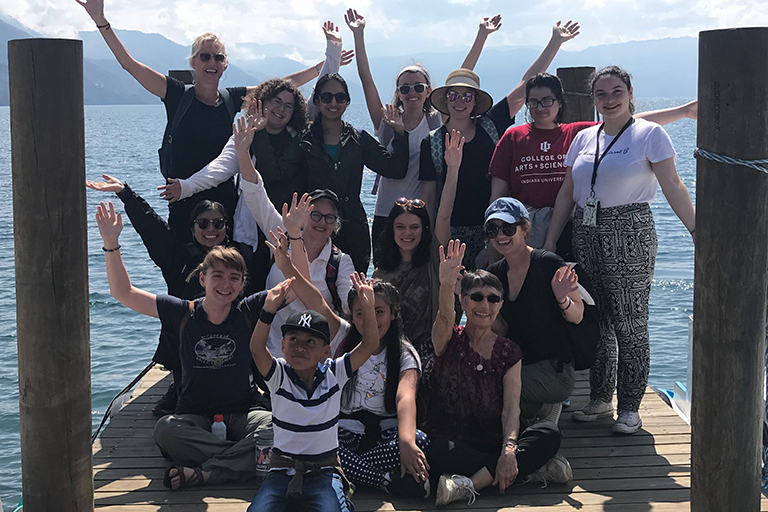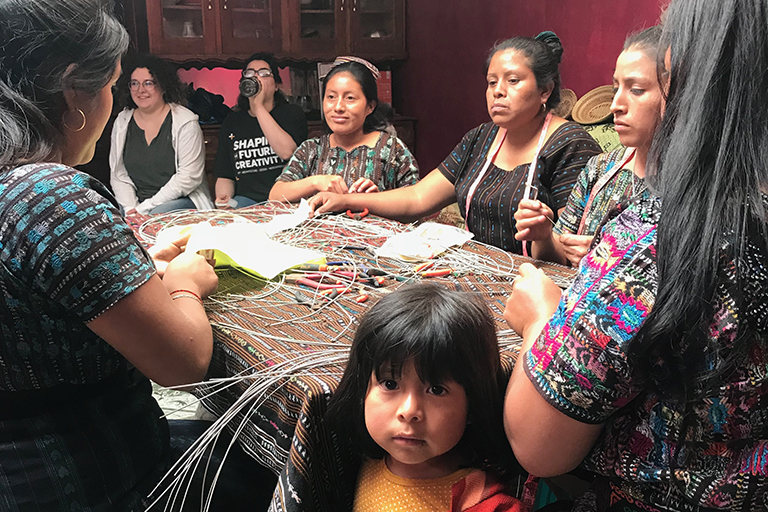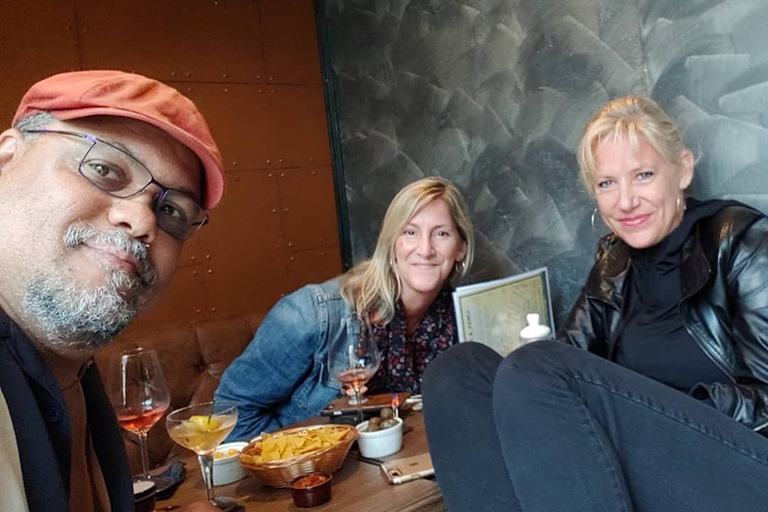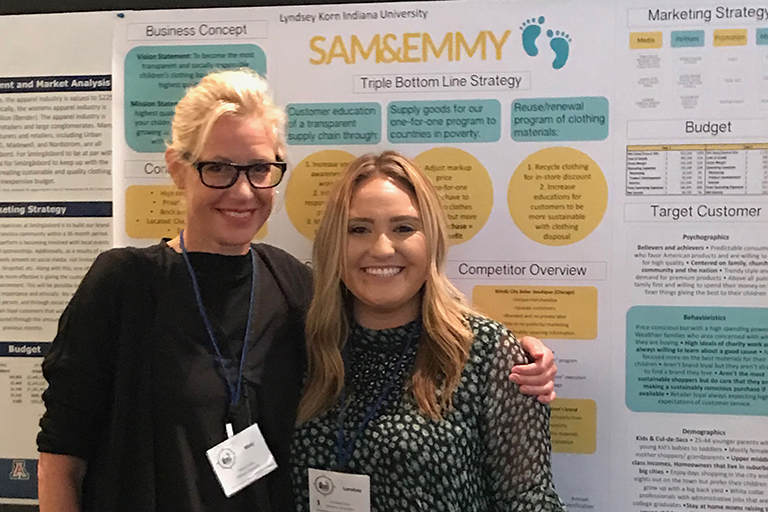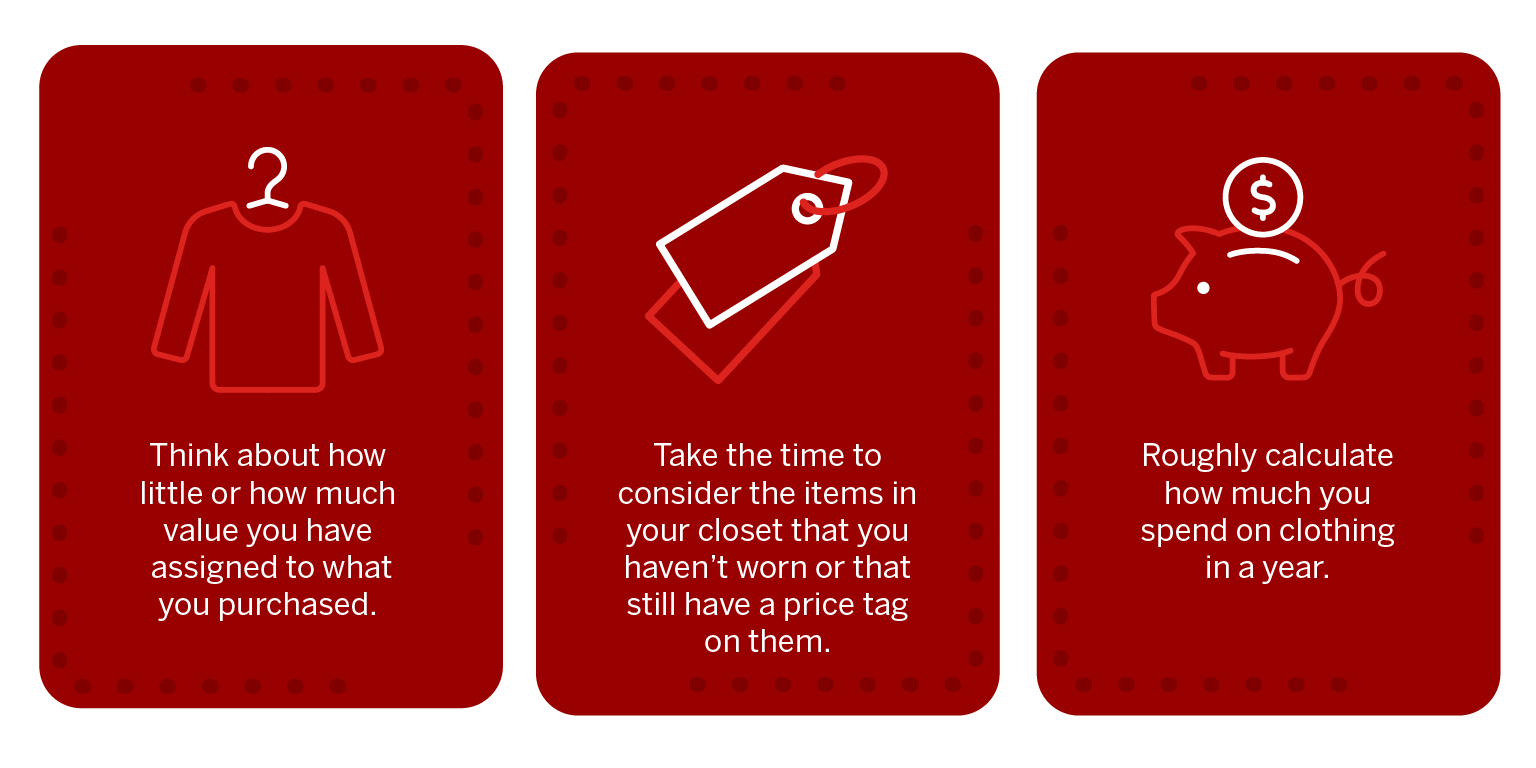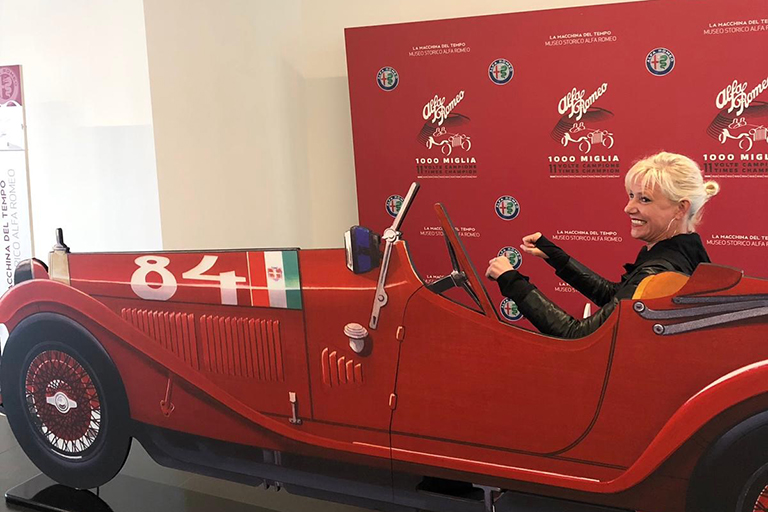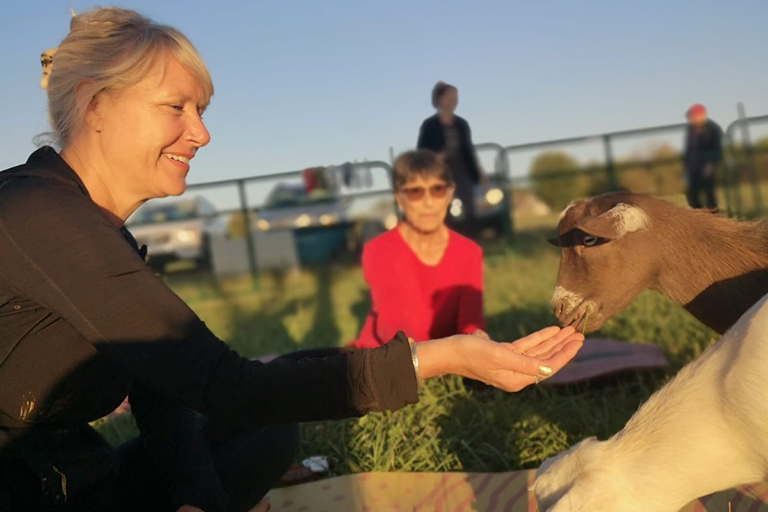Her research and teaching at the Eskenazi School focus on sustainability, fair trade, and product development. “Human rights in fashion are one piece of a rounded sustainability conversation about people, planet, and profit,” Mary said. “As I saw scientists calling the alarm about climate change, I couldn’t talk about sustainable fashion without deeply considering how environmental costs had also been made an externality to the industry.” She is also founding director of the Center for Innovative Merchandising, which brings together curriculum and practice, directing high-impact student programs that help students build skills in creative and entrepreneurial leadership. She earned both a Bachelor of Science and Master of Science in apparel merchandising at IU.
With “fast fashion” production at an all-time high, we asked Mary how to be more conscious consumers.
Q: Earth.org reports that fast fashion has led to a doubling of clothing production since the year 2000 —from 100 to 200 billion units a year — and a sharp decline in the lifetime of a garment over the same period (a decrease of 36 percent). For those who want to infuse some more thoughtful purchasing into their lives, what buying habits do you recommend cultivating?
A: The fashion industry spread globally has shown incredible innovation in bringing down the price of production in response to economic and political influences over time. The efficiencies discovered have been fast, and Gen Z was born into an era where fast product is simply a fact of existence – but this speed of innovation has certainly been at the expense of people and planet. Gen Z recognizes this, showing an appetite for new models, most obviously in the growth of support for secondhand clothing and the leasing of clothes.
A longer life for our fast fashions is not without issues. More clothing is made to be disposable because that suits consumer expectations; fashion is not made with the expectation that it will be passed around, and shopping secondhand does not address the core relationship between fashion and our identity. Social media can also fuel the feeling of a need for newness and fast trend consumption.
There is a need to bring quality back to the conversation about our clothing purchases. Not quality in terms of luxury, but in terms of materiality.
Thinking more sustainably means shifting to long-term goals.
What if you intentionally shift buying away from impulse purchases to those that may cost more, that you love? The things you love speak to who you are — they can be worn over time, function well, and, possibly, they are a part of your story, because they represent how your values are a part of the conversation in your buying choices.
Q: What initially sparked your interest in sustainable fashion, and why is it so connected to the health of the planet?
A: The fashion industry is welcoming for right- and left-brain thinkers. I left an undergraduate degree in merchandising really excited about globalization in the industry — but very disturbed by the human rights abuses that were associated with it. At that time, fair trade was the movement where I found like-minded conversations about the market benefitting those without political or economic power.
For 25 years, I have been an advocate for more attention to who makes our clothing. Human rights in fashion are one piece of a rounded sustainability conversation about people, planet, and profit. As I saw scientists calling the alarm about climate change, I couldn’t talk about sustainable fashion without deeply considering how environmental costs had also been made an externality to the industry. It was a natural evolution of my interests.
Fashion is wasteful and has deeply concerning environmental impacts along the whole supply chain, from cotton farming and plastic production to disposal. For starters, fashion production has too large a CO2 output, uses way too much water in dyeing and finishing, and produces more waste than there is structure to absorb. Recently, I have started to see more “clothing dumps” on social media — remote places where large amounts of clothing have been discarded, seemingly out of sight. Environmental impacts have been hidden from the consumer for decades and only revealed when people or organizations like Greenpeace are able to push out what we don’t see.
Q: Have you found that more students come with an awareness of the terms “fair trade” and “fast fashion” than, say, 10 years ago? What kinds of themes have you observed among current interests among fashion students?
A: Absolutely. I have had the joy of this semester’s sustainable fashion class being able to talk and think deeply about the fashion industry moving toward sustainability, because they know about the challenges of dwindling resources and especially feel the impact of climate change largely for the first time. It is the experience that changes us. The dramatic shifts in climate activity — even in Bloomington, I believe — makes students search for questions and answers independently. Students come not needing to understand the problems but wanting to talk about solutions. It’s been a wonderful shift.
So, the problems are known, and some approaches thus far have awareness, like fair trade. The intricacies of how problem-solvers are defending the planet and people in increasing collaboration is something to work through. I aspire for students to see where their communities of innovation and change are — corporate and not — when environmental and human rights are not defended by the state. I want them to see multiple avenues of influencing change. Twenty-five years ago, my class was about definitions and vocabulary; today it is discussion, consideration, and community building.
I still am disappointed that the United Nations Sustainable Development goals are not ingrained elementary school material. I do still have students that say, “Why am I just finding out about this?”
Q: What do you want people to know about the merchandising area in the Eskenazi School that they might not know?
A: We have some of the most accessible faculty in the College and are very interested in student success. I love the area because it sits in the College, and students can explore the liberal arts while thinking analytically. Despite our position in Eskenazi, we are not an art program. We are perfect for people who are curious about the world and like to dream about possibilities, people who are also willing to learn analysis to help guide decision making. I think we excel in development of both creative and analytical thinkers and also have opportunities for those who don’t fit into one bucket.
Q: What current project/s would you like to share? Any upcoming events you recommend for the campus community?
A: One of the best things about IU is that there is not a day where there isn’t something I want to go see, listen to, or be a part of.
It can be a challenge for students who are assigned to go to outside events as mandated by course work, as it feels busy. In a long-term thinking mind frame, I would suggest (for students) to treat yourself every so often to a talk outside the requirements that is about a new or questioning interest and see what it offers. In the Eskenazi School, we have McKinney Artist Visiting Lecture Series speakers many Fridays. They usually have nothing to do with my field but ALWAYS result in conversations that take what I know and challenge it in a new light. It also is an opportunity to listen outside my comfort zone. In the same vein, I take part in Hamilton Lugar School events, as well. The Patten lectures always enlighten, and I am hard pressed to miss them, no matter the discipline.
I am, like many, reconsidering priorities as attitudes toward Covid change. Dr. Christensen and I are taking students to Italy to talk about fashion and sustainable making in May. I am intent in working on my previous collaborations in Guatemala. Merchandising can feel like a conversation about scaling fashion, and I like to be in the position to offer opportunities to think about product as community-engaged with small but impactful outcomes. I am also thinking about a class where I don’t assign grades. Particularly crazy.
Q: Bonus: What celebrity (or regular person) is your fashion icon?
A: EASY. Stevie Nicks, Anjelica Huston. The ‘70s were not the fast fashion era, but I like looking to “influencers” at that time because it wasn’t about the change in fashion, but the consistency of the person/brand. Fashion empowered what they were, in being consistent with what they wanted to say. You saw the person without asking about the designer. I feel artists are particularly in tune with how fashion speaks.
At a non-celebrity level, I can see this on campus with all age groups. Fashion that you notice on people that provides an opening to be approached and a has a voice. What you wear may assign you to a community, but how does it open a conversation to who you are (besides a consumer of fashion)?


